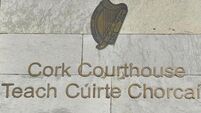Oil leak not linked to BP well
An oil leak spotted in the Gulf of Mexico appears to have come from drilling wreckage on the ocean bed rather than the well that blew in 2010, US scientists and BP said.
A probe was launched after a sheen was discovered on September 16 in waters near the site of America’s worst offshore spill.
The investigation suggests the oil might have seeped from a mile-long metal tube, called a riser, which connected the Deepwater Horizon drilling rig to the Macondo well.
The well itself, capped after more than 200 million gallons of oil spewed out, is not believed to be leaking, officials said.
The oil sheen posed no environmental threat because it was a small amount of oil and was far from land, federal officials said.
The announcement of oil leaking out comes at a sensitive time as BP and the Justice Department negotiate terms of a possible settlement to resolve the government’s claims against the oil giant.
Several billion dollars are at stake if the talks produce a settlement for what are likely to be record-setting civil and criminal penalties.
The tests of the sheen showed chemical signatures of Macondo oil mixed with drilling muds, which are lubricants used in drilling the well and trying to plug it after the explosion on April 10, 2010.
Frank Csulak, the scientific support co-ordinator for the National Oceanic and Atmospheric Administration, said: “This led to the conclusion that the oil causing the sheen out at the surface is likely coming from the riser.”
He said at most the riser could contain about 75,600 gallons of oil, but experts expect less than that is trapped inside it. He said tests have ruled out the possibility that the new sheen came from oil sitting on the bottom of the Gulf because it was not weathered and degraded.
Mr Csulak said BP and Transocean, the drilling company contracted by BP to drill the well, have been given until Friday to provide a plan of action. He said the companies could be asked to remove whatever oil is left in the riser.
“It would be possible to remove the oil; it’s not going to be easy,” he said.
He added that the amount of oil that leaked out is small and that once the oil reaches the surface “it evaporates and dissipates within hours”.
Still, the sheen and acknowledgement that BP’s oil is reaching the surface of the Gulf sparked a new flurry of condemnation of the oil giant and stoked claims that BP and the coastguard have been unwilling to investigate whether BP’s well was completely sealed in.
Independent scientists and environmental activists have reported sheens around the Macondo well for more than a year.
Ed Markey, a Massachusetts Democrat representative, demanded that BP be forced to conduct new surveys of the well and the wreckage around it. He said BP should allow the public to view underwater video of its surveys in real-time.
“One can only hope that the nightmare well has not come back to haunt the people of the Gulf. There is no room for error, and no room for obfuscation, when it comes to this matter.”
Brett Clanton, a BP spokesman, said the company had been working closely with federal agencies to investigate the sheen. He added that there was no indication that oil had leaked from the capped well.
He said tests showed the presence of alpha-olefins, a lubricant used in drilling mud and not found in oil coming directly from a reservoir. He said the presence of alpha-olefins “strongly suggests” the oil came from the wrecked riser.
Lou Colasuonno, a spokesman for Transocean, said the company would “rely on the lab analysis as to the origin of the oil”. But he suggested it was BP’s responsibility to deal with whatever oil remains in the riser. Transocean and BP have argued in court over responsibility for the spill.













